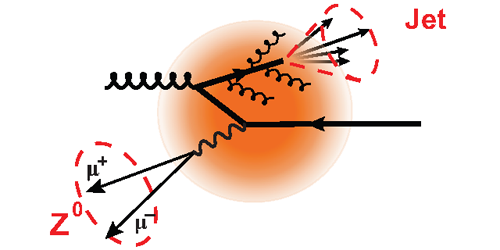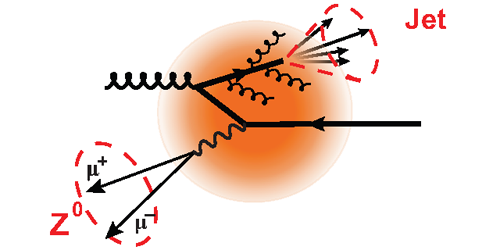A Precise Probe of the Quark-Gluon Plasma
Immediately after the big bang, the Universe was filled with a hot, dense soup of quarks and gluons. Scientists can recreate this quark-gluon plasma (QGP) in particle accelerators by smashing heavy ions together. The collisions also produce partons (quark and gluons) that subsequently produce hadron jets. The energy lost by the partons as they travel through the QGP can be determined from measurements of the jets, revealing properties of the QGP. Now, the CMS Collaboration at the Large Hadron Collider has measured a jet produced in coincidence with so-called Z bosons—the carriers of the weak interaction. These combined Z-boson–jet measurements may characterize the QGP more precisely than conventional measurements probing the jets only.
Z bosons interact with the QGP much more weakly than the partons do, so they don’t lose energy as they travel through it. Thus the bosons’ energy is very close to the initial energy of the partons emerging from the ion collisions. And the difference between the boson and parton energies can reveal the QGP’s properties.
The team carried out two sets of experiments—collisions between heavier lead ions and collisions between lighter protons. They then compared the energies of the Z bosons—observed by detecting electrons or muons from the bosons’ decays—to those of the coincident jets. They found that the ratio of parton energy over Z boson energy in lead collisions is smaller than in proton collisions. The finding is not unexpected: lead collisions create a large QGP for the partons to travel through and interact with. However, the measurements more precisely characterize the energy lost by partons. Such information can be used to discriminate between models with different QGP parameters.
This research is published in Physical Review Letters.
–Katherine Wright
Katherine Wright is a Contributing Editor for Physics.





